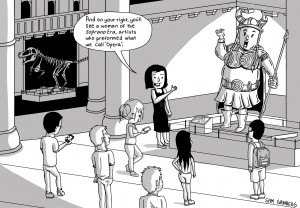Opera’s Last Act

As sociologists Paul DiMaggio and Toqir Mukhtar showed in a 2004 Poetics article, the high performing arts may be undergoing “de-institutionalization”: changing levels of prestige and declining popularity and attendance. In contrast, popular arts face minimal, if any, declines. Knowing and enjoying many art and popular forms is increasingly more prestigious.
Some arts organizations have responded by trying to appeal to more popular tastes. Last September, for example, New York City Opera premiered Anna Nicole (yes, it’s about that Anna Nicole). But with financial deadlines looming, such innovations were too little, too late.
As DiMaggio and Mukhtar show, audiences have changed: younger, less educated audiences have diminished, and the typical arts patron has become older and better-heeled. While declining rates of attendance among college graduates and women are less dramatic, it’s unclear how much longer some ballet, opera, and symphony orchestra companies will survive.
